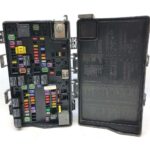A 2019 Honda Odyssey Elite experiencing multiple system failures after a dealer visit for brake service, a 3G OTA update, and a DVD player issue highlights the potential for unforeseen complications during routine maintenance. Following the service, the vehicle displayed error messages related to Collision Mitigation, Lane Keeping Assist (LKA), Adaptive Cruise Control, Lane Departure Mitigation, and Auto High Beam. Additionally, proximity detection and navigation system functionalities malfunctioned. Initially, the dealer suggested a faulty camera sensor. However, further diagnostics revealed a U3000-49 error code, indicating an “internal failure.” This code often points to a communication breakdown within the vehicle’s network, potentially affecting various systems reliant on sensor data.
The U3000-49 code in Honda vehicles suggests a problem within the internal network communication. While the specific root cause of the U3000-49 code can vary, it frequently stems from a disruption in the communication pathways between critical modules. These modules include, but are not limited to, the camera sensor, radar unit, and various control units responsible for driver-assist functions. A malfunction in any of these components or their connections can trigger the U3000-49 code. Given the timing of the issue—immediately following a dealer visit and software updates—it raises questions about a potential correlation.
Possible causes for the U3000-49 error in this specific case could be related to the recent OTA update and subsequent “full system reset” performed by disconnecting and reconnecting the battery. The Honda Sensing OTA update that occurred after reconnecting the battery could have further contributed to the communication breakdown. This sequence of events suggests the possibility of a software glitch or an incompatibility arising from the updates.
Troubleshooting the U3000-49 code typically involves a systematic diagnostic approach. Technicians often use specialized diagnostic equipment to pinpoint the source of the communication failure. Checking for loose connections, damaged wiring, or faulty modules are crucial steps. Given the complexity of modern vehicle systems, consulting Honda service bulletins and technical documentation related to the U3000-49 code and the recent OTA updates is highly recommended. These resources might offer insights into known issues, troubleshooting procedures, or potential software fixes. In this case, opening a case with Honda USA was a proactive step to escalate the issue and potentially leverage manufacturer expertise in resolving complex diagnostic challenges.
Ultimately, the U3000-49 code in a Honda vehicle signals a critical internal communication problem. Thorough diagnostics, referencing service bulletins, and engaging with Honda support are crucial for effective troubleshooting and resolution. The temporal connection between the dealer visit, software updates, and the onset of the U3000-49 error necessitates a careful investigation to determine if the service procedures contributed to the malfunction. This underlines the importance of meticulous service protocols and the need for comprehensive diagnostics when addressing post-service complications.

